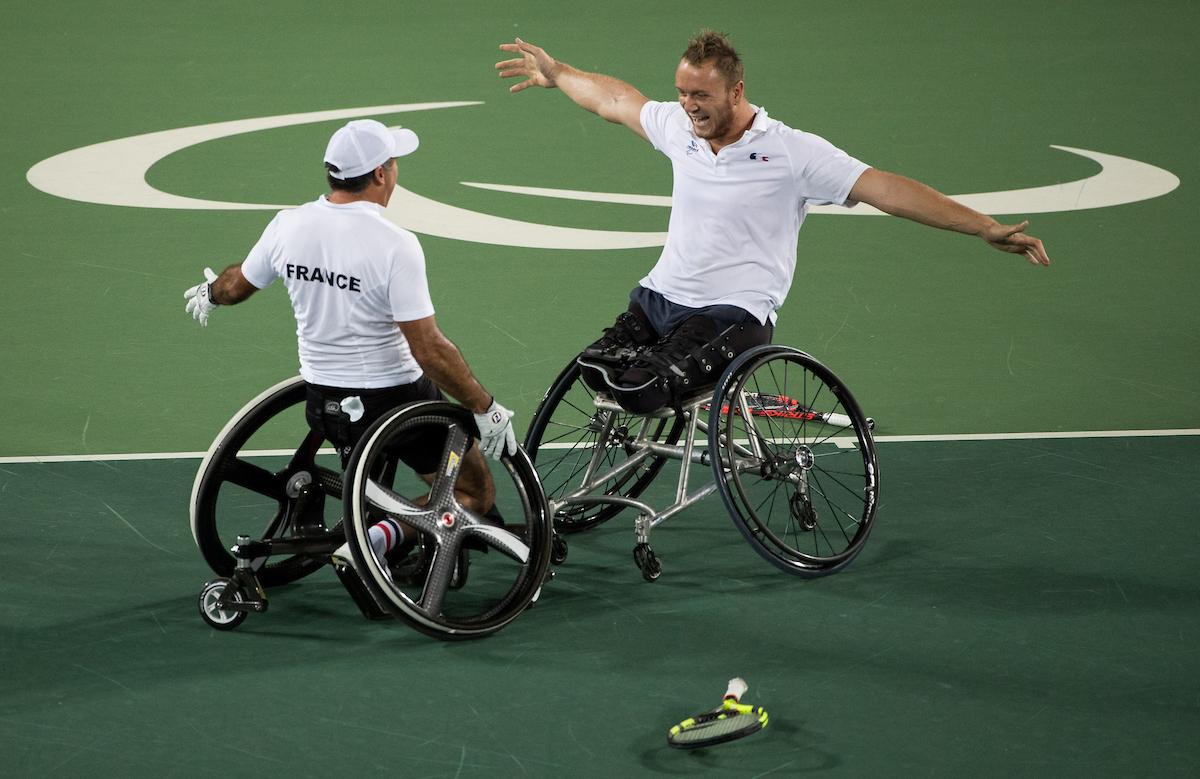How wheelchair tennis is developing in France
Jean-Pierre Limborg, pioneer of wheelchair tennis in France, gave an insight into how the sport has grown over the last decades. 04 Jun 2017
Stephane Houdet (L) and Nicolas Peifer are the reigning Paralympic men's doubles champions
Wheelchair tennis has enjoyed a steady growth in France since its introduction in the early 1980s. Several French players are amongst the world’s best and, last month, France won their eighth men’s World Team Cup in Alghero, Italy.
Much of the success the European country has had is thanks to Higher Council of Tennis Member Jean-Pierre Limborg, the man who pioneered wheelchair tennis in the country.
With Roland Garros, the second Grand Slam of the year, taking place this week, Limborg spoke about what it feels like to have played such a key role in the development of the sport.
“Currently we have 30 wheelchair tennis tournaments in France. Half of them are ITF (International Tennis Federation) events, and we also have the French inter-club championship, which I think is unique in Europe,” he explained.
“So we already have much to be proud of. Within two years we will have wheelchair tennis integrated across all departments and commissions of the Fédération Française de Tennis (FFT – French Tennis Federation).
“We have lots of work to search for juniors and to find the next Stephane Houdet or Nicolas Peifer. It is a great opportunity but we can build on things for the next generation. Simplicity of organisation is our goal.”
Limborg was introduced to the sport for the first time in 1981, when the then 25-year-old engineer travelled to the factory of Quadra in Los Angeles, USA, which was manufacturing the very first light alloy wheelchair. The owner was Jeff Minnenbraker, the recreational therapist who pioneered wheelchair tennis in the USA.
Minnenbraker encouraged Limborg to attend a wheelchair tennis tournament in Las Vegas the following weekend. The Frenchman went and his life changed forever.
“Within half an hour of arriving, I was on the court. I lost 6-0, 6-0 to a female player, but I found the sport so much fun and so exciting,” he recalled.
“At that time, wheelchair basketball, table tennis, swimming and track and field were popular options for newly disabled people, but I just fell in love with wheelchair tennis.
“I went back and stayed in the USA for four months. I received my first lessons from Brad Parks and Randy Snow, so I feel very lucky that my introduction to the sport included lessons from these legends.”
On his return to France, Limborg was determined to introduce wheelchair tennis to his country.
“Shortly after I got home from the USA, I was watching a TV report on motor racing and there was this man called Pierre Fusade on his bike and they mentioned him as ‘Pierre Fusade, former tennis teacher.’
“So I called the TV station and they gave me Pierre’s contact details. I got in touch with him straight away. I told him I had just come back from the USA, where I’d played wheelchair tennis. Pierre’s first words were ‘I’ve tried, it’s impossible.”
However, having first met in November 1981, the joint passion of Limborg and Fusade resulted in them turning the ‘impossible’ into ‘possible’ and, in December 1981, they were invited to play a wheelchair tennis exhibition with French tennis players Yannick Noah and Pascal Portes.
Within a year, the first wheelchair tennis tournament had taken place in France. Three decades after, Limborg still enjoys wheelchair tennis like the day he played for the first time.
“There is some magical thing in wheelchair tennis because of the players and the friendships we have made and the things we all share,” he said. “It helps us renew our batteries and our minds. And that applies to the volunteers, too.
“There is so much passion in this sport and I think a lot of the other tennis players out there can learn a lot for their motivation from watching the likes of Stephane Houdet and Shingo Kunieda.”
Full story can be found on the International Tennis Federation’s website.

 Facebook
Facebook
 Instagram
Instagram
 Twitter
Twitter
 Youtube
Youtube
 TikTok
TikTok
 Newsletter Subscribe
Newsletter Subscribe
